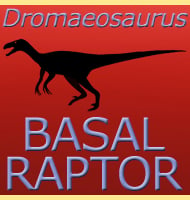Dromaeosaurus
In Depth Although as the name suggests this was the first dromaeosaurid to be discovered, it was not well understood until some of the other dromaeosaurids were discovered and studied. This has allowed for the gaps to be filled in, giving a much more accurate representation of what Dromaeosaurus was like. While Dromaeosaurus still had … Read more
